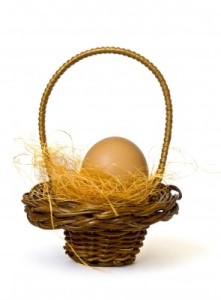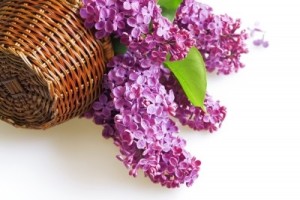HOW WEAVING WILLOW FED MY INNER TECHNOLOGIST
HOW WEAVING WILLOW FED MY INNER TECHNOLOGIST
By CHANTAL COOKE
Do we misunderstand the real meaning of technology?
We tend to think of computers, mobile phones and HD TVs as the heights of modern consumer technology. It’s true these items can keep you organised, connected and entertained – but do they fulfil you? Do they feed your soul? Do they make you feel good?
Sometimes; maybe. Most of the time; probably not.
And yet there was a time when technology did all these things for us. A time when technology was about creativity, as well as functionality. A time when we each had the skills to make the items that kept us organised, connected and entertained. This was a technology that connected us to the natural world and fed something deep within our souls.
Take a technology like basket weaving. We’ve been doing this for over 2000 years. In the UK the usual material was willow, as it’s native to our island. These willow baskets allowed us to carry large quantities of nuts and berries after a day of foraging. It enabled us to transport goods to a neighbouring settlement and barter them for items we could then take home. And willow weaving didn’t stop at baskets. We made fences, frames to support our crops, woven hearts for decoration, and hoops threaded with flowers for weddings. Our limits were our imagination.

Two millennia later willow weaving was still such an important technology that it was a reserved occupation during the First World War. Willow was an essential part of the war effort and no one was allowed to use it for their own use. Why was it so important? Well, was completely sustainable (i.e. what you used this year grew back next year) and it was the perfect container for dropping food and ammunition supplies to troops on the battlefields and behind enemy lines.
Today we pick up a woven basket from IKEA. It probably costs us less than a skinny latte. We take it home, we use it, we don’t really think about it.
But imagine making your own. Imagine choosing the rods of willow, flexing them slightly to get the size and tension you want, bending them into position and using a strip of thinner willow to tie them firmly in to place. Then imagine taking your time to pick the perfect combination of golds, greens and deep purples to thread through the solid ribs of the basket creating the exact design you want. Imagine watching the basket take shape in your hands as you sit drinking tea and chatting amiably in front of a roaring log fire.
Better still, stop imagining and instead sign up for a willow weaving course.
Clare Revera and Mel Bastier from Out To Learn Willow run a range of courses suitable for beginners and advanced students. Try it for a day or book up for six weeks of evening classes and develop your skills.
I tried out a two day taster course at the Heritage Coast Centre in DunravenBay (about a 20 minute drive from Bridgend) in Wales. The idea is you get to make one item from each of their courses. This way you can quickly get a sense of the sorts of things you enjoy making the most.
We started with a simple tear drop shaped bird feeder and very quickly progressed on to a chunky willow wreath ready to be decorated with festive holly and baubles and then hung on the front door. Then using a deep red willow we fashioned willow hearts (or angel wings for those with young children).
After a delicious home cooked vegetarian meal we headed out into DunravenPark to soak up the view of the cliffs covered in glittering snow with long silver icicles dangling from the rocks. The view was breathtaking – well worth braving the cold. We carried our long rods of willow with us, plus a couple of Derby Dibbers (big heavy dibbing tools essential for any living willow enthusiast). In the walled garden of the ruined castle, under the watchful eye of a very tame robin, we dibbed, wove and snipped the willow into a living willow arch.
November to February is the perfect time to plant willow and by the spring, as long as it is watered well, our willow arch will sprout leaves and grow into a stunning natural structure that would look impressive in almost any garden.
The rest of the afternoon was spent making Christmas stars and practising different forms of weaving from the standard over and under weave to the random looking crazy weave.
In the evening the group rendezvoused in the local pub – the unusually named “Pelican in her Piety”. Around the table sat 12 educated, intelligent women – all comfortable with using computers, smart phones and other electronic items essential for modern living. And all loving the connection and camaraderie that can only be got by learning together and then using your hands to create something beautiful.
On the second day we made baskets, Christmas trees and giant cone shaped plant supports – ideal for growing beans or sweet peas. We all left laden-down with our handicrafts and strips of willow to do our own project at home.
It’s the best time I have had with technology in a long time!
I am not suggesting that there is anything wrong with using laptops and mobile phones – they serve an important purpose in modern life, just as the willow basket did for ancient man. The important thing is to remember that technology is more than electronics and machines. It is something we create. It’s a use of our skills. Creativity is a basic human instinct – but so much is now created for us that it’s easy to ignore that urge and starve it.
I’d recommend feeding your inner technologist – whether its willow weaving, cooking, pottery or DIY. The sense of achievement and connection (to your inner self and to something bigger) is powerful and it leaves you with a warm glow that even the snow can’t melt.
Notes:
You can hear interviews with Clare Revera from Out to Learn Willow at PASSION for FRESH IDEAS http://www.passionforfreshideas.com
For more info about Out To Learn Willow see; http://www.outtolearnwillow.co.uk
For a lovely B&B with a stunning view and friendly hosts just a few minutes from the Heritage Coast Centre I can recommend Hazel and Roger Norfolk on 01656 880532

About the Author:
Chantal Cooke is an award winning journalist and broadcaster with a passion for the planet. In 2002 she co-founded the award winning radio station PASSION for the PLANET and in 2009 Chantal was awarded London Leader in Sustainability status. Chantal also runs a successful communications agency – Panpathic Communications.

